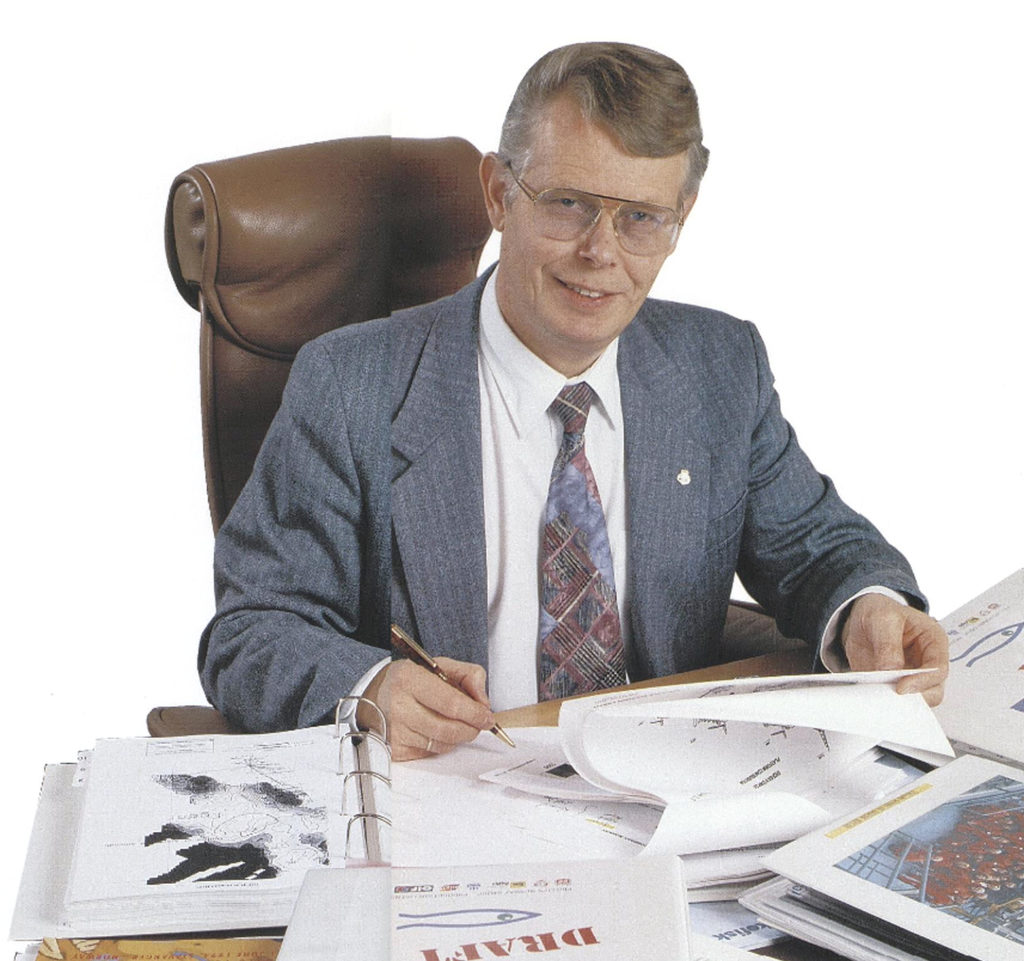Knut Åm – oil and gas veteran

Åm was born at Årdal in the Sogn district of western Norway in 1944, and grew up in Oppdal and Volda/Ørsta where he proved an able pupil at school.
He opted to study mining engineering at the Norwegian Institute of Technology (NTH) in Trondheim, graduating with honours in 1967.
Åm’s first job was with the Norwegian Geological Survey (NGU), again in Trondheim, where he worked and conducted research for six years. One of his jobs was to interpret aeromagnetic measurements of sub-surface rocks made from the air, which provide valuable information on geology and prospects for finding petroleum. In a series of publications, he described the big sedimentary basins identified in the Skagerrak between Norway and Denmark and in the Norwegian and Barents Seas.
He joined the Norwegian Petroleum Directorate (NPD) in 1974, serving as a section head in the resource department and a principal engineer in the safety department.
That was followed by three years with Statoil, where he became the state oil company’s first vice president for research and development. His appointments at the time included chairing a research programme on offshore safety, which led to legislation enacted by the Storting (parliament) and a bigger research effort.
Joining Phillips
 olje og gassveteran knut åm,
olje og gassveteran knut åm,Åm secured a job with Phillips in 1982 and was soon sent to the head office at Bartlesville in Oklahoma to get better acquainted with the company and its corporate culture.
After a year in the USA, he returned to the company’s Tananger office outside Stavanger and became the first Norwegian to serve as offshore manager for the Greater Ekofisk Area (GEA).
That put him in charge of 23 platforms, with responsibility for the waterflooding programme as well as the project to jack up a number of the installations. These major developments extended the producing life of the GEA and sharply increased estimates for recoverable reserves from its fields.
Åm led this work during difficult times, with low oil prices and the need to implement cost savings and overcome substantial financial challenges. As if that were not enough, he also taught at the University of Bergen from 1985 to 1990 as an adjunct (part-time) professor of applied geophysics.
First Norwegian chief executive
 Knut åm,
Knut åm,After heading operations in the Permian and San Juan Basins at Odessa, Texas, from 1988-91, Åm became the first Norwegian president and managing director for Phillips Petroleum Norway.
That put him in charge of 3 000 employees in the GEA as well as in Tananger, Oslo, Teesside and Emden. This was when a redevelopment of Ekofisk was planned, along with the future cessation and removal of old platforms.[REMOVE]Fotnote: https://www.fylkesmannen.no/globalassets/fm-rogaland/dokument-fmro/felles-og-leiing/brev-og-artiklar/fm-tale-til-knut-am.pdf
By 1996, Åm was back in Bartlesville – now as vice president and head of all exploration and production in Phillips. He stayed in that job until retiring in the USA during 1999.
Offices and committees
But his working life did not end there. Appointments from 1999 to 2007 include membership of the Statoil board – and many similar posts can be mentioned.
Åm has been president of the Norwegian Geological Council and the Norwegian Petroleum Society, and chair of the Norwegian Oil Industry Association (now the Norwegian Oil and Gas Association).
He led the exhibition committee of the 1996 ONS oil show in Stavanger, and has chaired Bergen’s Christian Michelsen Research institute as well as the industrial council of the Norwegian Academy of Science and Letters.
In addition to chairing Hitec ASA, he has been a director of several technology companies.
Mention must also be made of the improved recovery committee appointed by the Ministry of Petroleum and Energy with Åm as chair. This produced a report in September 2010 which presented 44 specific measures for improving the recovery factor on the Norwegian continental shelf (NCS).
Through his work and many appointments, Åm has been acclaimed for a combination of expertise, creativity and determination. He also demonstrated the ability to tackle the requirements of Norway as a nation as well as the industry and its employees – not least with regard to the working environment and safety in a demanding and risky offshore industry.
Optimist
In retirement, Åm is an optimist – with regard to the climate as well. “I’m very concerned with nature, but believe we should extract the resources it’s given us,” he told Otium in 2016.
“Norway could have a long and good future in the oil and gas industry if people give it more support. Exploring for new deposits is important, but we should also seek to achieve a far better recovery factor from both new and existing fields.”
“You can naturally concentrate on life’s negative aspects. Then everything’s simply awful. I think you’ll be a far happier person if you prefer to see the positive side of life. I call that self-motivation. We need more of that in the energy sector.”[REMOVE]Fotnote: https://api.optimum.no/sites/default/files/PDF/optimum-magasinet-2016.pdf
